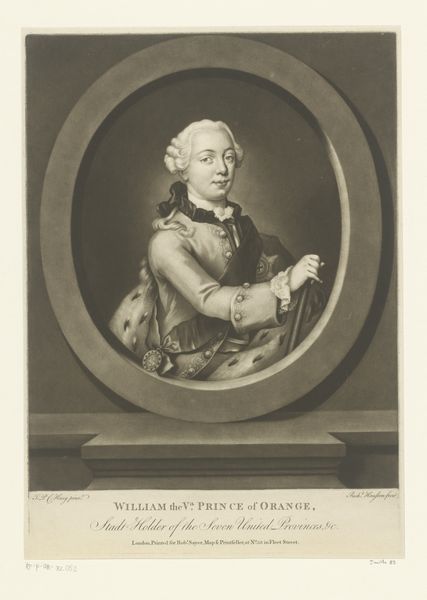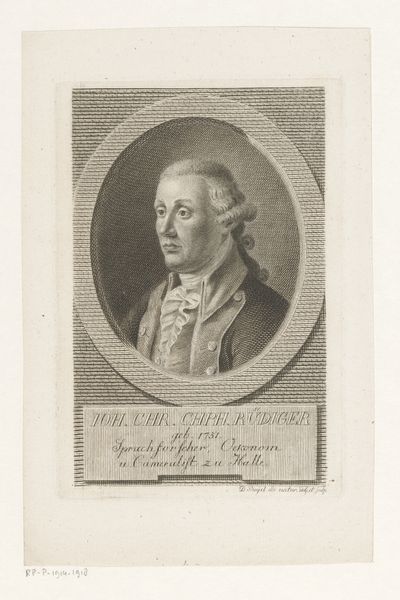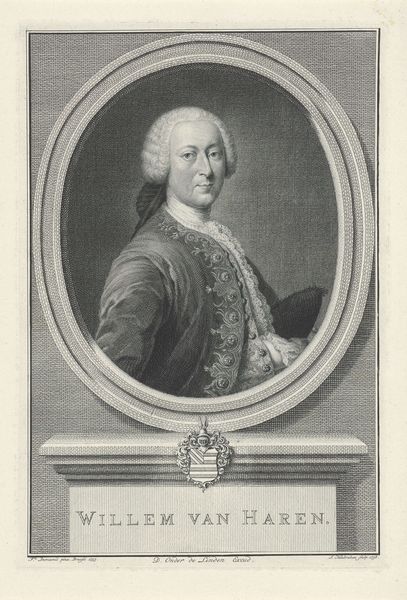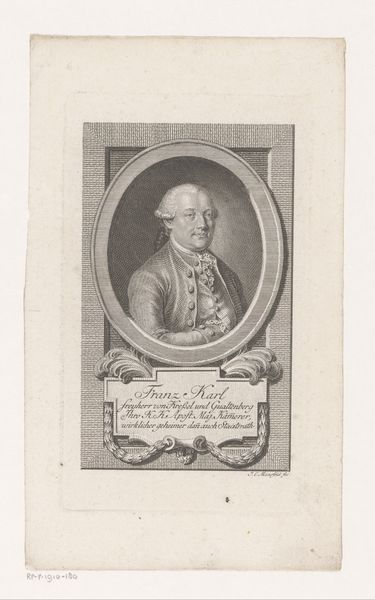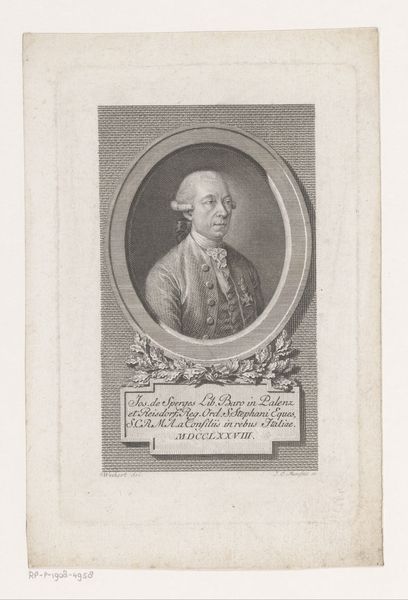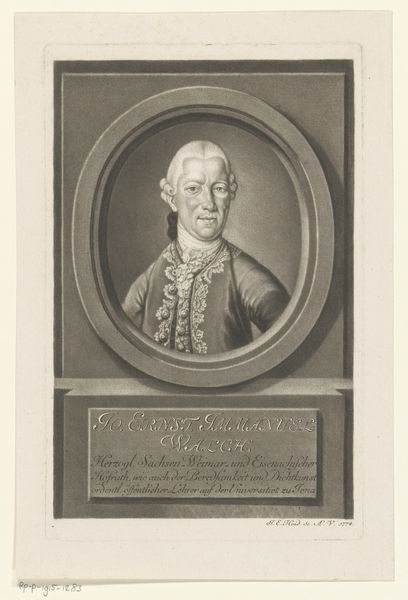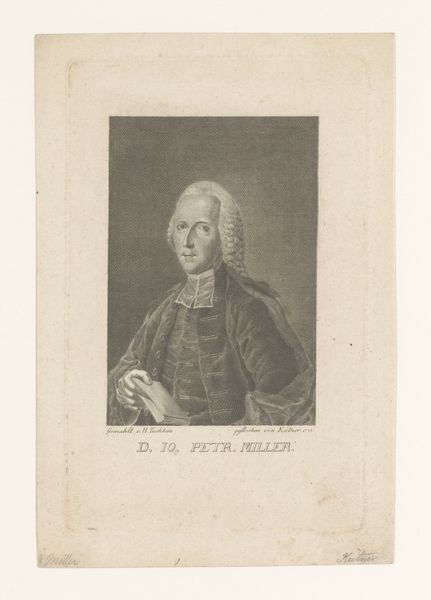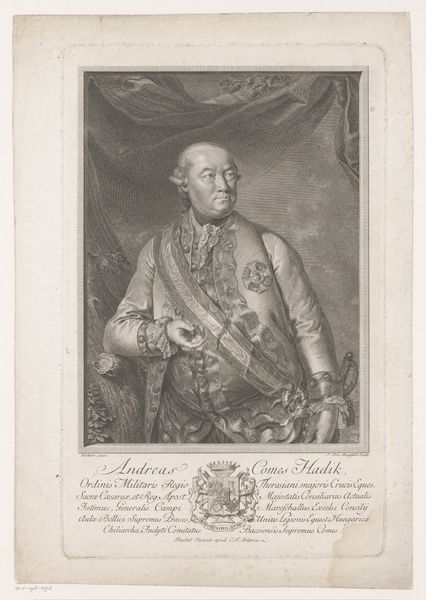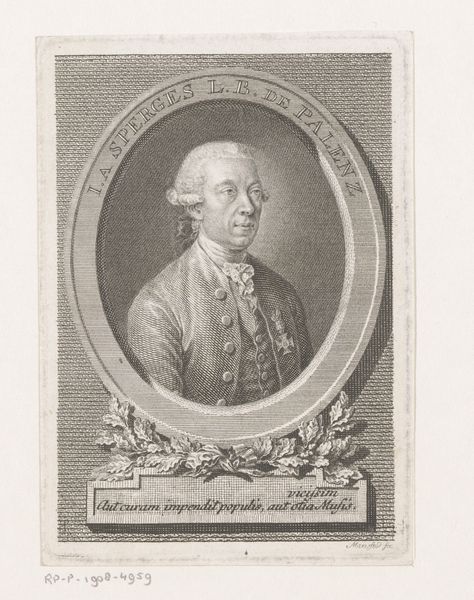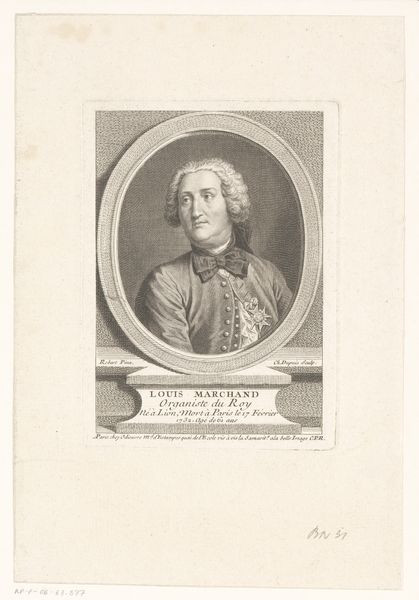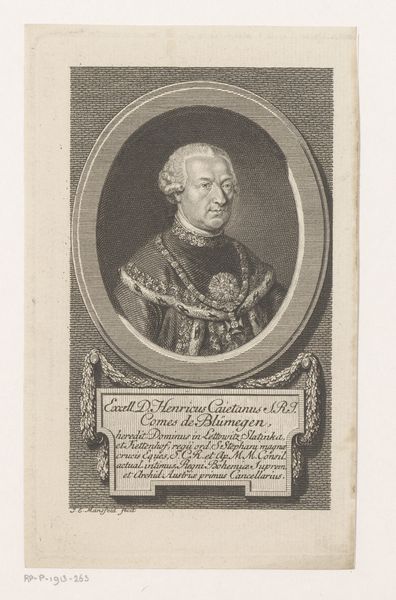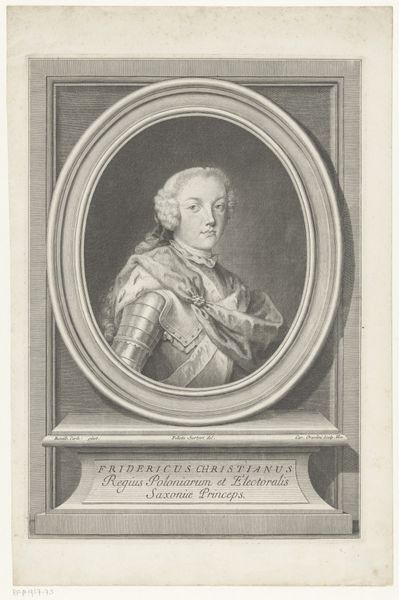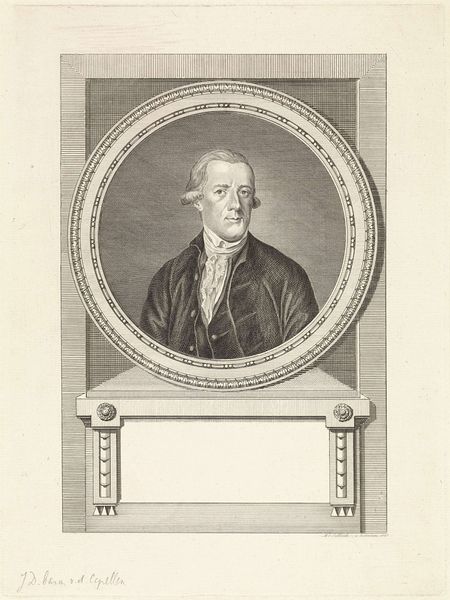
Portret van Georg Burkhard Haller von Hallerstein 1765 - 1780
0:00
0:00
christophwilhelmbock
Rijksmuseum
Dimensions: height 281 mm, width 204 mm
Copyright: Rijks Museum: Open Domain
Editor: So this is a portrait of Georg Burkhard Haller von Hallerstein, created sometime between 1765 and 1780. It's an engraving, giving it a very crisp, formal feel. I’m struck by the oval frame, and the almost overwhelming sense of officialdom – all those titles beneath! What catches your eye when you look at this print? Curator: The titles are definitely a starting point. They point to a desire for remembrance and the perpetuation of status. Haller is carefully identified with his lands, orders, and positions. The symbolic language here speaks to a deep-seated need to affirm one's place in the world, to create a lasting image, literally, in print. Have you noticed the coat of arms? What might that signify beyond simple identification? Editor: I guess the coat of arms adds another layer of identity – like a visual shorthand for his family history and lineage. It’s almost like a brand, but for a person. Curator: Precisely! It's about encoding identity into readily recognizable forms. These symbols—the orders, the arms, the very style of dress—were visual cues to a complex network of power and social standing. The Baroque embraced symbolism as a potent means of communicating ideas about authority and tradition. This image would trigger associations that resonate through cultural memory and suggest a lasting presence for Georg Burkhard. Editor: That makes me think about how portraits today use clothes or settings to signify status, but in a much more subtle way. It seems much more explicit here. Curator: Indeed, subtlety shifts with cultural values. We've learned to decode the language of the modern portrait, just as contemporaries would have understood this image's rich symbolism. Ultimately, this engraving isn't just a likeness; it's a carefully constructed message about a man and his world, designed to endure through representation. Editor: I never thought about portraits as a message meant to endure. It puts a completely different spin on how I look at them. Curator: Understanding this, does that not change your thinking about all of art?
Comments
No comments
Be the first to comment and join the conversation on the ultimate creative platform.
